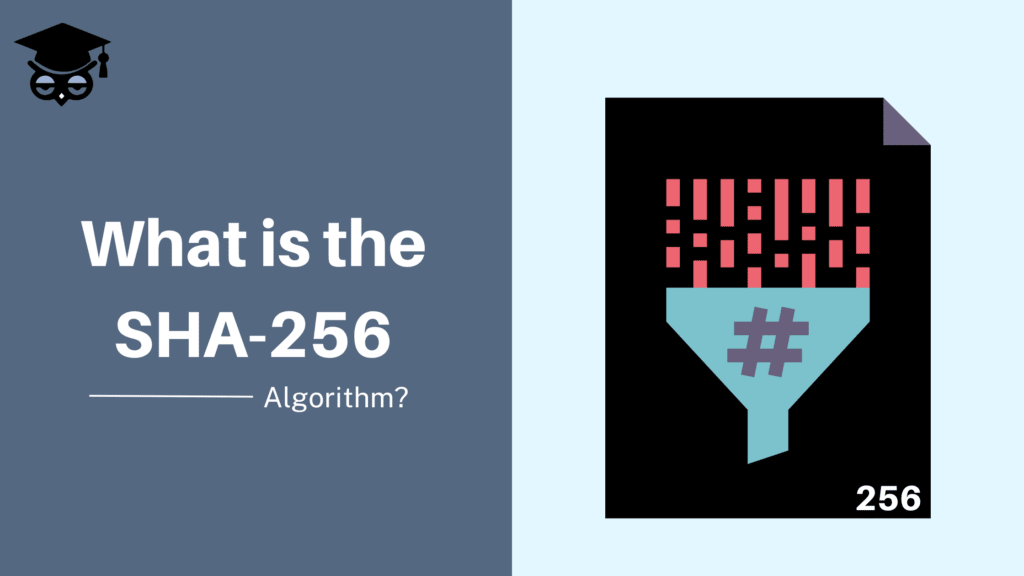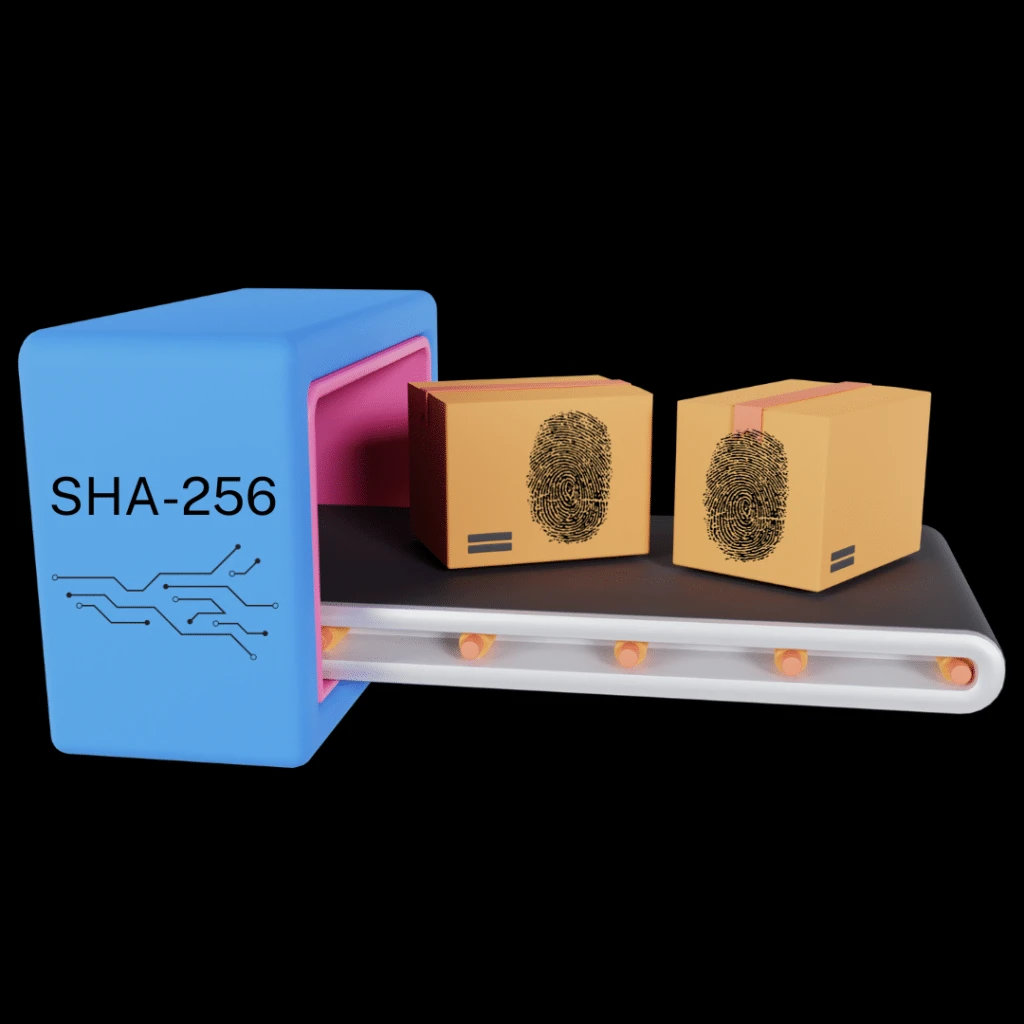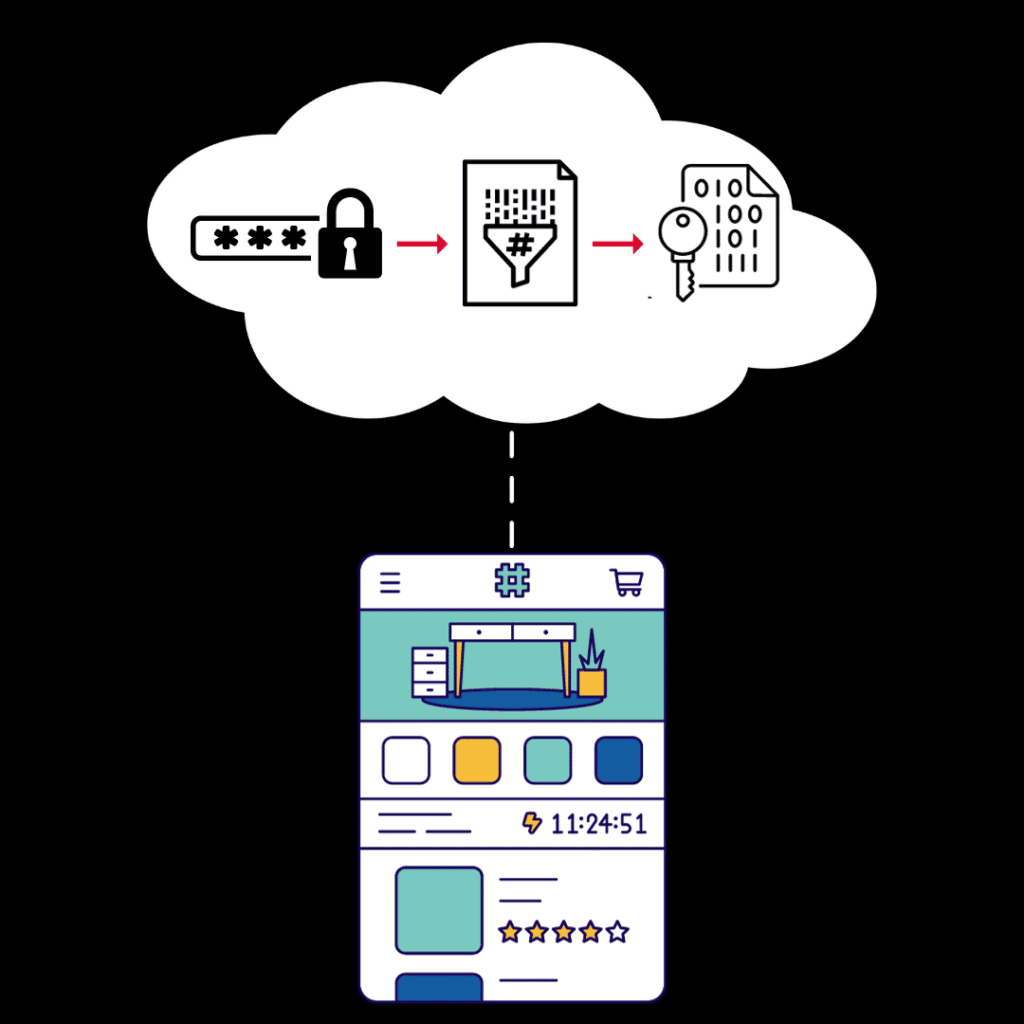What is SHA-256?
SHA-256 is an algorithm used to turn data of any size into a unique output, known as a hash, of 256 bits.
The Long Definition
SHA-256 (Secure Hash Algorithm 256) is a cryptographic hash function. These functions are used in algorithms to turn data into a unique 256-bit (32 bytes) alphanumeric string. This string is known as a hash.
The hashing algorithm has applications in blockchain, password storage, digital signature verification, and SSL handshakes. In the blockchain, it is used during the process of mining new blocks and verifying transactions. It plays a crucial role in ensuring the security and integrity of the blockchain.
SHA-256 belongs to the SHA-2 family of algorithms. Other variants in the class include SHA-224, SHA-384, and SHA-512.

History of SHA-256
SHA-256, together with other functions in the SHA-2 family of hash algorithms, was designed by the National Security Agency (NSA). It was then published by the National Institute of Standards and Technology (NIST) in 2001.
The SHA-2 family was introduced as a successor to the SHA-1 family. SHA-1 was the previous version developed in the 90s by the NSA. However, it was discovered to be vulnerable to certain types of attacks and was replaced by SHA-2.
SHA-256 is arguably the most popular hash function in the SHA-2 family. It is used in a variety of applications, from password storage and digital signatures to blockchain and data integrity checking.
How Does SHA-256 Work?
Understanding SHA-256 begins with understanding hashing algorithms. These algorithms contain mathematical functions that take in data and produce a fixed-size output. This output is known as a hash or digest. In SHA-256, the size of the hash is 256 bits (32 bytes).
The hash is typically a string of alphanumeric characters. The hashing function is designed such that the same input will always produce the same hash. At the same time, any difference between inputs will result in a completely different digest.
In most cryptographic techniques, there is a way to get the original information. This involves the use of a “key” to decipher the data.
Hashing, however, has no key. It’s a one-way encryption technique, making it irreversible. Therefore, there is no way to know the original data from the digest. Passing it through the hash function will yield no result.
Hashing algorithms differ depending on the specific steps of securing information and the size of the output. In SHA-256, the output is 256 bits, hence the name.

Uses of SHA-256
Hashing algorithms are used to store and ensure the integrity of sensitive data. This is especially the case where multiple people have copies of the data. Passwords provide the best illustration.
Let’s say you have an account on a popular e-commerce website. You have your password. At the same time, the platform has to store the account password so it can check against your copy when you try to log in.
However, the platform can’t store passwords in their original forms. This is because if it’s hacked, the attackers will gain access to the full account details. Therefore, passwords are typically hashed using an SHA-256 function before being stored.
If you were to access the platform’s database, you would only see hash values instead of passwords. And since hashes are irreversible, there’s no way to tell what the real passwords are. This is why accounts are rarely compromised during massive data breaches where customer details are stolen.
So, how does the platform know you have the correct password?
When you type in your password, the information passes through the same hash function. The platform then compares the resulting value with the value it has in its database. Remember, a hash function will always produce similar outputs when fed similar data.
So, if the values match, you’ll be judged to have the correct password. If they don’t match, the login attempt will be rejected.

SHA-256 in Blockchain
A blockchain is a decentralized ledger of transactions. It is maintained by participants running computers known as nodes. Each node stores a copy of the blockchain. All nodes regularly check against one another to ensure they have the correct versions. This process requires a consensus mechanism.
SHA-256 is a key component of the Proof of Work (PoW) consensus mechanism. PoW is used to secure Bitcoin in a process known as mining.
During mining, Bitcoin uses SHA-256 to create a hash value for the block being mined. Participants known as miners, then compete to solve the hash. To do this, a miner must combine the data stored in the block with a value known as a ‘nonce’ and pass them through the hashing algorithm. The first miner to return the required hash wins.
The “nonce” is, however, hidden from miners. Therefore, miners repeatedly hash the block with different nonce values. This process uses specialized computers known as Application-Specific Integrated Circuit (ASIC) miners.
The Future of SHA-256
SHA-256 functions play a crucial role in ensuring cryptographic security. But its future isn’t guaranteed. Quantum computers have the potential to break the security provided by hash functions like SHA-256. Therefore, as quantum computing becomes more widespread, the world will need a new algorithm design.
